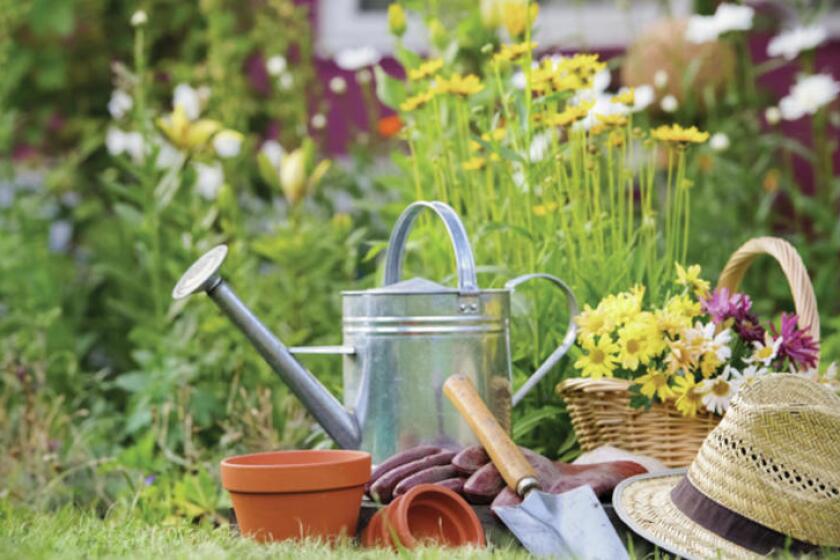It is getting that time of year again. Those lovely baskets or potted plants that were given as Mother’s Day or special occasion gifts may be starting to look a little lackluster due to blooms coming to the end of their beauty.
Removing spent blooms from your garden flowers can be tedious work but often pays big dividends. Pinching or pruning dead flowers is not just a matter of aesthetics - it can also encourage additional blooming. Many short-stemmed plants — petunia, geranium, marigold, speedwell, and coreopsis, among them — will re-bloom after deadheading.
ADVERTISEMENT
In the grand scheme of things flowers are meant to ensure the survival of the species. All the various blooms that nature developed are an attempt to ensure that seeds are produced and the next generation of plants develops.
By deadheading, we can interrupt this reproductive cycle and encourage the plant to put its energy into re-blooming.
In most cases when deadheading you can simply remove the old flower by pinching off the stem just below the base of the flower. If the flower stem is large or you don't want to stain your fingernails green, you may find using a pruning shears or scissors to be a better choice.
Warning: simply pulling the dead flower petals off without removing the developing seed pod does not increase flower production since seeds will still develop.
Where do I pinch or cut? Any flower can be removed just above the first leaf below the flower head without affecting the rest of the plant. For plants with larger stems removing just the flower may leave an ugly stem exposed.
When deadheading long-stemmed flowers like Gerbera Daisy, Heuchera, hostas, daylilies or Shasta Daisy, remove each flower-stalk as low to the ground as possible without damaging surrounding leaves. Remember: all deadheaded flowers expect to be put on a compost pile or into a compost bin!
Even roses flower more prolifically when old flowers are removed just above the first leaf below the flower rather than at the first set of five leaves as was the former standard recommendation.
ADVERTISEMENT
Recently, flower breeders have realized that sterile plants, those that do not produce seeds, will bloom continuously without deadheading. These plants keep on trying, unsuccessfully, to produce seeds so they keep producing flowers.
Rather frustrating for the plant, but easier for the gardener. Many of these plants are called "low maintenance" or "self-cleaning." This means that wind or other factors will cause the flowers to either blow off the plant or simply melt away leaving no old flower to remove.
Choose your tools thoughtfully! The thickness of the flower stems will determine the type of cutting device. There are small pruners that are perfect for thin stems. For thicker stems, good scissor-like pruning shears will be needed.
It is important to use the type of shears that have an both upper and lower blades that cut through the stem versus the anvil-type of pruner where the upper blade is scissor-like, but the lower blade is stationary and flat. The anvil-type tool results in the flower stem being cut and crushed at the same time, which will harm the plant.
Sometimes we don't want to deadhead! Many plants produce ornamental seed pods if the flowers are left intact.
You might choose to leave these for landscape interest during the winter or leave them as a source of seed for birds such as sparrows, or finches. Giant rudbeckia, coneflowers, echinacea, gaillardia and asters make excellent food sources during the winter.
Deadheading should be done in spring to early summer, as waiting until late summer or fall to begin is usually too late as the shortening days of fall and cooler temperatures will work against the growth of new flowers.
ADVERTISEMENT
Deadheading is more than a gardening task — it's a way to keep your garden flourishing. By taking a few minutes to snip away spent flowers, you're investing in a garden that thrives and produces more beautiful flowers, and that's what you've been striving to accomplish!
These local garden articles will reach you each week throughout the gardening season, but gardening information can be found year-round by clicking on "Yard and Garden" at the University of Minnesota Extension website, or by visiting our Facebook page at
Local Master Gardeners will respond to questions via voicemail. Call (218) 444-7916, and leave your name, number and question.








